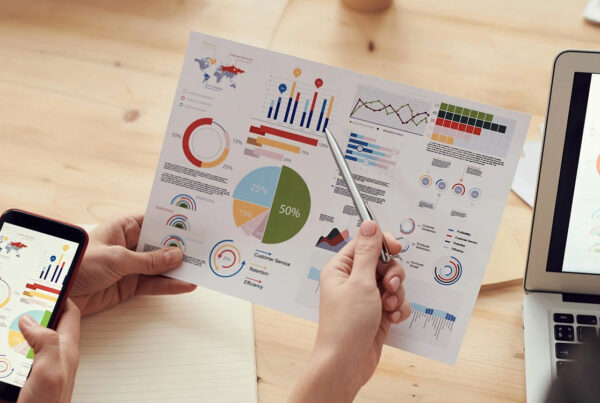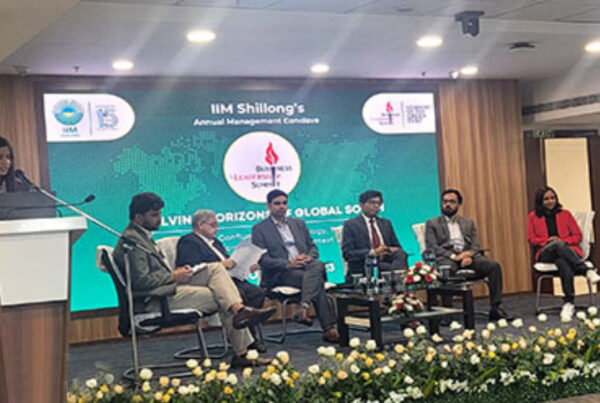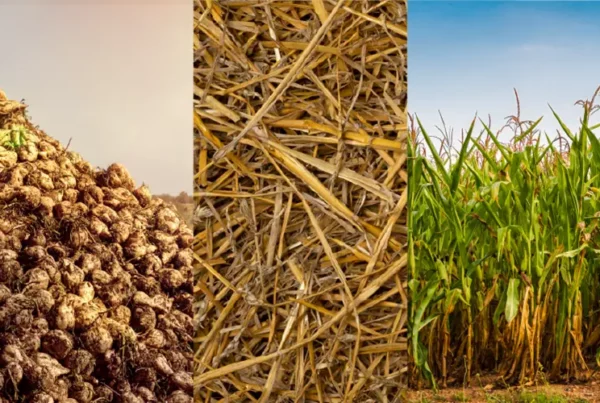Plastics are a critical material for every economy. Hence, building a circular economy for different forms of plastics is essential. As awareness about environmental pollution increases and the need to ensure sustainable use of resources grows, let us take a look at why plastics have occupied the centerstage and how different trends are shaping the development of sustainable plastic products.
As the climate change crisis grows and the challenge posed by pollution intensifies, threatening biodiversity, the need to switch to a plastic circular economy is greater than ever. The looming shortage of primary resources also makes the concept of recycling and reuse more relevant.
According to a 2021 CGR report, the circular economy can reduce global GHG emissions by 39% and bring down usage of virgin resources by 28%. Naturally, the next question is what will it take to build a circular economy?
According to the World Economic Forum, the answer probably lies in changing our ‘take-make-dispose’ approach pertaining to production and consumption. In other words, this means recycling waste to ensure reusability for sustained consumption of primary resources. And when we talk of waste and its reduction, one of the most used materials in the globe to build a circular world is plastics.
Enter plastic circular economy.
Why do we need to focus on plastic circular economy?
Over the last 50 years or so, plastics have pervaded almost every aspect of our life and economy, given that they are highly versatile and cost-effective. Plastics are used in nearly every industry, from electronics (such as cell phones, televisions, computers) to automotives to consumer products to food & beverage to even infrastructure construction, both as an input in product development and in packaging to keep products safe and fresh. Naturally, plastic products are a major contributor to revenues. Hence, it becomes difficult to imagine a future without plastics.
The benefits notwithstanding, plastics have significant disadvantages, too. The problem arises from the way it is produced – from fossil fuels; the production process pollutes both air and water. Equally bad is the method of disposal of single-use plastic products.
According to a report by the Ellen Macarthur Foundation, a staggering amount of plastic, worth billions of dollars, is discarded in landfills year each year (and subsequently burned, which contributes to air pollution), while nearly 8 million tons of plastic enters the oceans.
The staggering apathy in dealing with such high volumes of discarded products has put the spotlight on the plastic industry.
Speaking about the future of plastic, the scope to recycle is significant. According to the World Economic Forum, nearly 20% of plastic packaging could be reused profitably, while 50% of it could be recycled gainfully, depending on improvement in design and after-use systems.
Given the usage of plastic and the potential for recycling, let us take a look at how the plastic circular economy is evolving.
What are the trends shaping the future of plastic?
On a positive note, the global certified circular plastics market is slated to record strong growth. According to Emergen Research, it is expected to grow from $1.37 billion in 2021 to $3.93 billion in 2030, recording a CAGR of 12.3%. A key factor that bodes well for the plastic circular economy, or for that matter the future of plastic, is the rising demand for eco-friendly plastics or a substitute of fossil fuel-derived plastic. This has put significant pressure on the plastic industry to rethink its ways and come up with more sustainable usage of plastic.
Increasing environment consciousness among consumers: Consumer spending is increasingly shaped by consciousness about the damaging impact of disposable products on the environment and the resultant awareness about the carbon footprint of purchases. As a result, purchasing habits are changing. Consumers are increasingly inclined toward simple and sustainable product packaging. Many often drop their favorite brands if they find that these companies are not complying with carbon footprint reduction practices.
Growing significance of ESG criterion: Rising awareness about sustainability among consumers is compelling companies to undertake strategic decisions that bode well for the plastic circular economy and thereby for the future of plastic industry. One such decision is investment in ESG initiatives. As sustainability gains prominence, corporates are focusing on the impact on the environment, responsible innovation as well as marketing & labeling, and quality & safety of product.
In a reflection of the pick-up in responsible thinking around sustainability, as a way to position their brand, many companies have taken significant steps. For instance, plant-based companies Quorn and Oatly have adopted carbon labelling, while L’Oréal is committed to introducing Environmental and Social Impact labeling. Danone announced carbon-adjusted Earnings Per Share (EPS), an effective means to communicate with the investor community. This highlights the role of ESG in a company’s financial performance and the part it could play in attracting investors.
Innovations: Given the scale of the problem in building a plastic circular economy and to ensure sustainable usage of plastic, corporates have accelerated their efforts to come up with innovative ideas. A few interesting innovations in this direction are edible, biodegradable packaging made from brown seaweed for beverages and condiments; solid products that do not need any packaging; or food that does not require packaging, such as a plant-based coating to slow down loss of moisture and retain freshness for a longer period. Bioplastics is also a case in point.
Another initiative in the direction of plastic circular economy is the establishment of funds to support investments aimed at strengthening the plastics infrastructure. One such example is the multi-million-dollar Closed Loop Circular Plastics Fund (CPF).
Some of the segments that are likely to witness strong growth, given their propensity for recycling, are Polyethylene Terephthalate (PET). This inert polymer is recycled extensively due to the benefits it offers over other types of plastics. Packaging is yet another segment that is seeing several initiatives directed at sustainability, and so is F&B, where there is a lot of scope in refillable containers or biodegradable/compostable packaging.
The growing awareness of manufacturers to come up with sustainable products and remodel production processes is indicative of the rise of circular manufacturing. It also indicates that we don’t have to necessarily envision a future without plastic, rather a future where the usage of plastic is environment friendly.
Regulatory support: After their decline during the pandemic that necessitated the use of plastics (as the consumption of gloves and masks rose amid hygiene-related concerns), regulations in support of the plastic circular economy are back in focus.
At the global level, in March 2022, 175 countries consented to forming an enforceable global treaty under the United Nations Environment Assembly, aimed at addressing plastic pollution, by 2024. The EU has one of the most detailed and extensive laws regarding recycling of waste and energy consumption. It has passed and promulgated several legislations in this regard since 1975 and 1991 to build a broad framework. To address the issue of marine litter and pollution caused by plastics, it adopted a European strategy for plastics in a circular economy in 2018, and in 2019, passed a directive on single-use plastics. A comparable framework in Japan is the BASICLAW, while in Germany, it is the German KrW-/AbfG. China, too, endorses the concept, given that it has one of the largest landfills in the world and is the key contributor to the production of single-use plastics. Building on its initial directive against single-use plastics, the country launched a major plan in 2020 to clamp down on plastics. The US, while lagging its counterparts in Europe and Asia with regard to imposing restrictions on plastics, has stepped up its actions. Several programs, such as the U.S. Environmental Protection Agency (EPA)’s National Recycling Strategy, have been implemented at the national and international levels. It is actively encouraging public-private partnership in this space, while among states, California is leading in regulating plastics.
To conclude
What will be the future of plastics? What would be the role of the plastic industry? What will its strategy be for coming up with a healthy substitute of plastic or to ensure sustainable usage of plastic? These questions are not easy to answer. Several factors pose challenges in building a functional and commercially viable plastic circular economy.
First, we need to understand that plastics will be around us – they are cheap, used in a range of applications, convenient to use, and highly useful in addressing challenges posed by unforeseen situations, such as the pandemic. So, in all likelihood, we cannot visualize a future without plastic.
Another very significant aspect is costs. Switching to alternatives or a substitute material is not accretive to the bottom line of companies. Moreover, innovations are more often expensive to adopt, especially till the time they gain traction.
Most important, however, is resistance from companies, especially plastic packaging manufacturers. Anti-single-use plastic regulations are likely to increase their financial liabilities by way of a hike in taxation or could cost their share in existing markets or dent their ability to pursue new opportunities. Due to these reasons, they are slow in aligning their guidance with the targets under the legislation.
That said, switching to a plastic circular economy is not an option anymore. It is a necessity, and we need to work our way towards achieving it. Plus, there are opportunities too. Growing consciousness among consumers bodes well for demand for sustainable products, as does investor backing for innovations in this space. Moreover, favorable regulations will likely benefit companies transitioning to recyclable plastics or undertaking initiatives to promote sustainable usage of plastic. Also, this means better prospects for paper or glass or aluminum that can be used as a substitute of plastic.
Finally, given the role of re-useable plastics in building biodiversity and sustainability, we must understand that the days of temporary fixes are over. To build a plastic circular economy, companies and governments need to work together to develop concrete solutions.
For more on Business Research, connect with Shubham Chatterjee, Vice President at Avalon Global Research.




